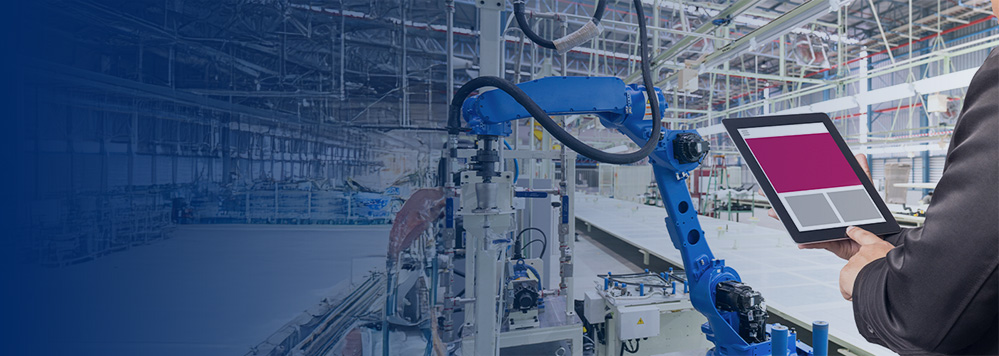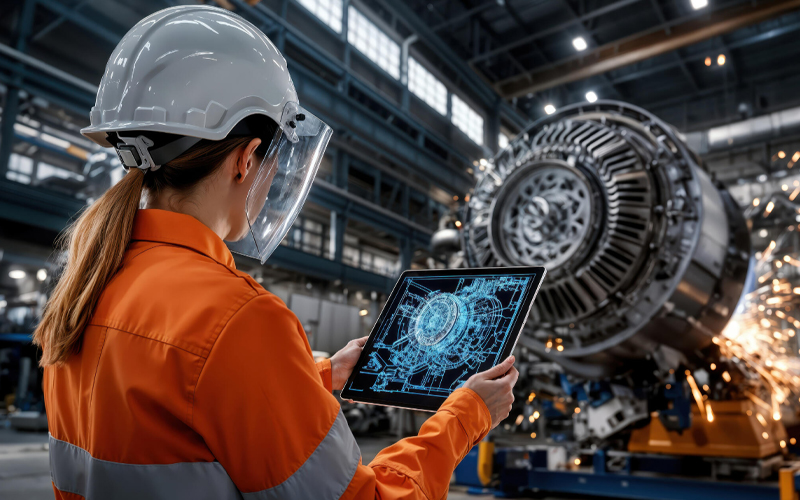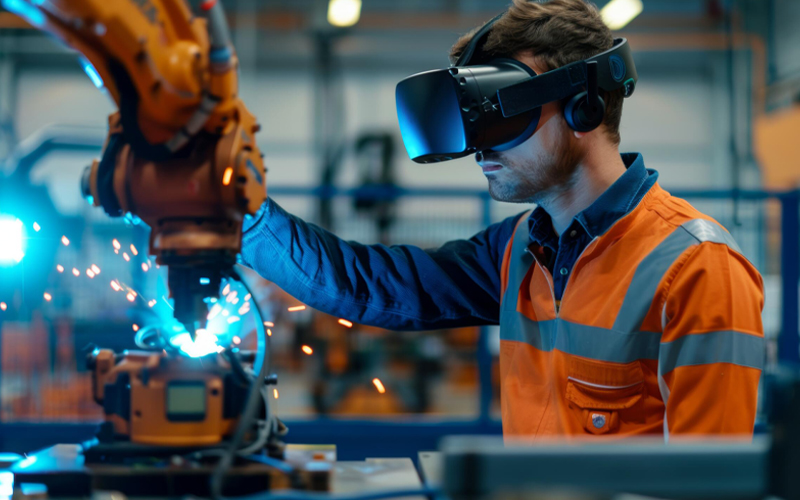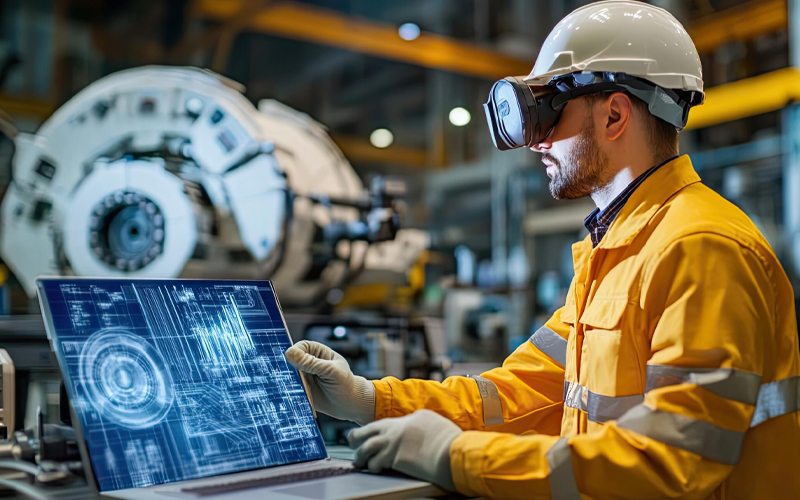The use of robotics in manufacturing dates back almost 70 years, when George Devol developed the first industrial robot, Unimate. Deployed by General Motors in 1961, it weighed two tons and worked on assembly lines, autonomously lifting heavy objects and welding car parts with a six-foot hydraulic arm.
Over the years, the capabilities of industrial robots grew from simple pick-and-drop jobs to include complex tasks such as material handling, palletisation, painting, and assembly.
Manufacturing robots are now leading the way to a digital transformation. With wide-ranging capabilities, including intelligent automation, innovation, resource optimisation, and collaboration, they are at the heart of Industry 4.0.
Robotics in manufacturing: Evolution and use cases
Early robotic appliances had limited programmability and were designed for heavy lifting and repetitive tasks. With rapid advancements in technology, industrial robots became increasingly sophisticated, evolving from basic automation enablers to intelligent systems capable of high precision, adaptability, and responsiveness.
In the new millennium, developments in Artificial Intelligence (AI), sensor technology, and the Internet of Things (IoT) have taken robotics several steps ahead. Modern robots are highly versatile devices that perform complex tasks, learn from experience, communicate with other industrial assets, and collaborate with human workers.
Some key applications of manufacturing robots include –
- Production and assembly
- Cutting and welding
- Material handling
- Palletising and packaging
- Machine tending
- Quality control
Robotic arms perform several hazardous and repetitive tasks in production units and assembly lines, such as transferring heavy items from one place to another, welding, and soldering. Besides heavy lifting, assembly line robots can also handle intricate tasks like inserting screws and pins and dispensing adhesives.
Industries use welding robots for metal and wood cutting, spot welding, arc welding, and laser welding. Robotic welding ensures accurate and consistent welds within milliseconds and enables employers to shield human workers from hazards such as burns and toxic fumes.
Robotic applications like cranes, automated guided vehicles (AGVs), and robotic arms execute pick-and-place tasks on industrial sites, load and unload conveyors, move materials between facilities, paint or polish products, and safely handle hazardous materials.
Manufacturing robots can sort, package, and palletise products for shipping with great speed and precision.
This is a relatively complex application of robotics in manufacturing. Machine tending robots handle several tasks associated with industrial machinery that would otherwise require operator intervention. These include loading and unloading parts, deburring, production monitoring, and adjusting machine settings.
Robots enabled with advanced vision systems, sensors, and scanners can inspect products, detect minute defects, identify deviations from specified norms, and ensure compliance with quality standards.
Leveraging robotics for manufacturing processes significantly enhances operational efficiency, cost-effectiveness, workplace safety, and product quality. Additionally, automating mundane tasksenergy allows manufacturers to optimise labour, resources, and human intelligence.
The Impact of Robots on the Future of Manufacturing
The above are mainstream applications of manufacturing robots. With the rise of new-age technologies such as deep learning, IoT, quantum computing, digital twins, and advanced perception, the impact of robots on manufacturing processes is becoming increasingly significant. Robotic processes are becoming increasingly intelligent, responsive, and capable of value-added work.
Below is how robots are shaping the future of manufacturing:
- Advanced human-robot collaboration
- Autonomous decision-making and intelligent output
- Customised products
- Future-forward solutions
- Swarm robotics and soft robotics
Unlike traditional robots that work autonomously or with minimal human intervention, collaborative robots, or ‘cobots’, work alongside humans in a shared environment.
In the next few years, cobots will continue to evolve through advanced sensing and cognitive technologies, becoming more capable of natural language perception, intuitive responses, and physical navigation in complex environments.
Seamless human-robot collaboration will result in significantly higher efficiency and productivity in manufacturing operations. In high-risk industries such as mining, metal forging, and construction, vision-based cobots will prove invaluable in ensuring on-site worker safety.
AI, ML, and deep learning technologies will enable manufacturing robots to make autonomous, data-driven decisions, self-learn from past instances, adapt to changing production needs and drive innovation. These capabilities will prove vital in facilitating autonomous manufacturing processes and creative problem-solving.
Equipped with additive manufacturing technologies (3D printing), robotic appliances can create intricate and customised products on demand. This will significantly accelerate production, eliminate the need for traditional manufacturing equipment, minimise production waste, and enable personalisation.
Integrating manufacturing robots with cutting-edge solutions like IoT connectivity, cognitive assets, and digital twins will unlock a plethora of possibilities for the manufacturing industry.
Such robots can facilitate predictive and prescriptive maintenance, remote monitoring of high-risk operations, advanced quality control, and smart manufacturing units. Additionally, they can generate high-quality data for analytical models and enable manufacturers to offer data-as-a-service.
Swarm robotics refers to multi-robot systems where several robotic applications coordinate and communicate with each other to execute complex operations.
Soft robots are systems fabricated with compliant and deformable materials, such as gels and elastomers, that grant them greater flexibility and mobility to navigate complex physical environments compared to hard-bodied robots.
These are evolving fields that will further revolutionise robotics-enabled manufacturing across various industries, including food, healthcare, construction, and automobiles.
How can Infosys BPM help with manufacturing operations?
Infosys BPM provides cutting-edge value engineering solutions for manufacturers seeking to optimise costs through digitisation. By partnering with Infosys BPM’s digital manufacturing service support, you can avail high-quality service offerings, including manufacturing analytics, performance management, quality management, production planning, and more.







